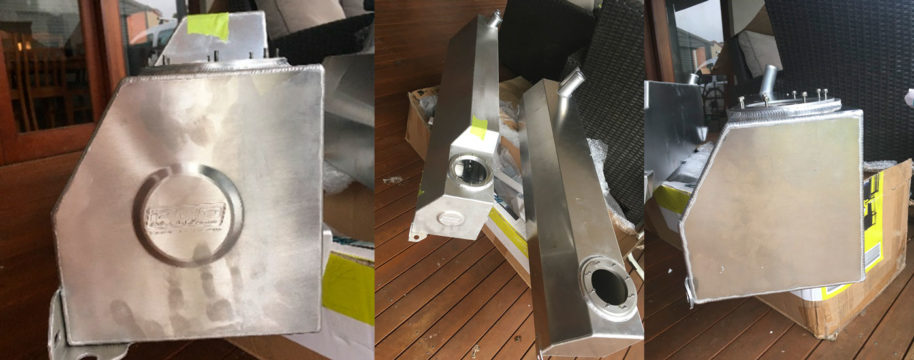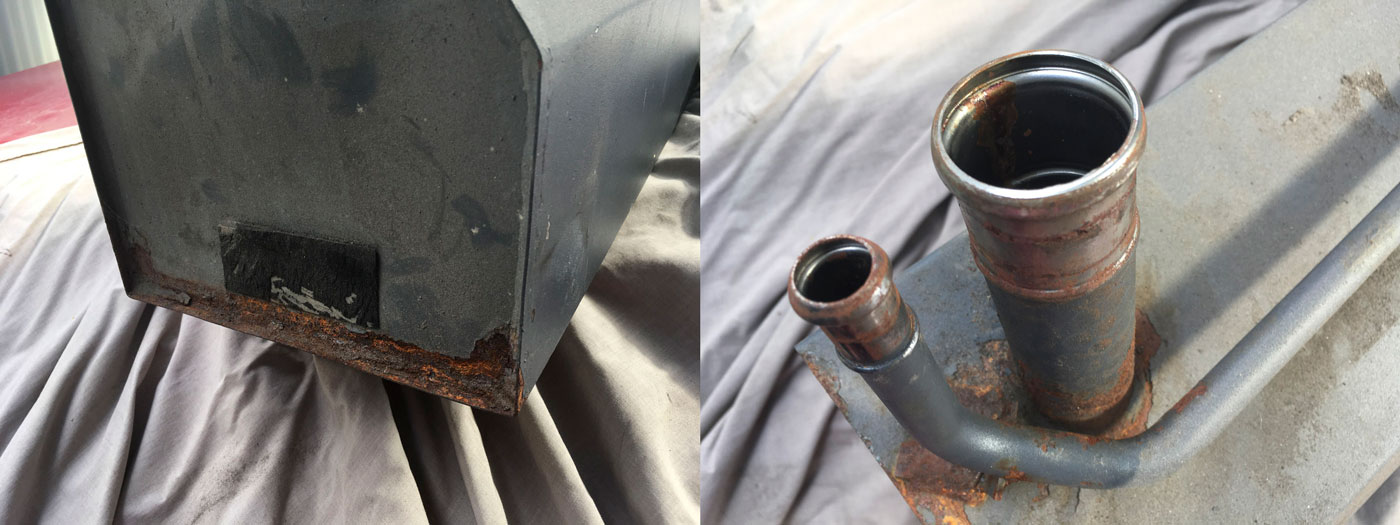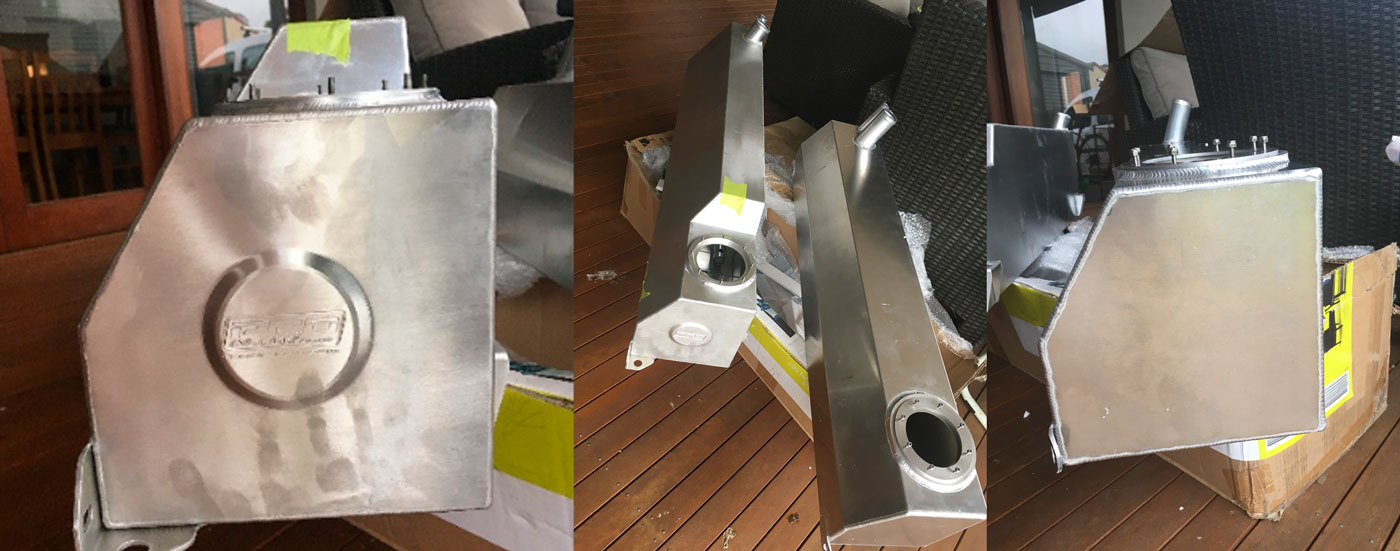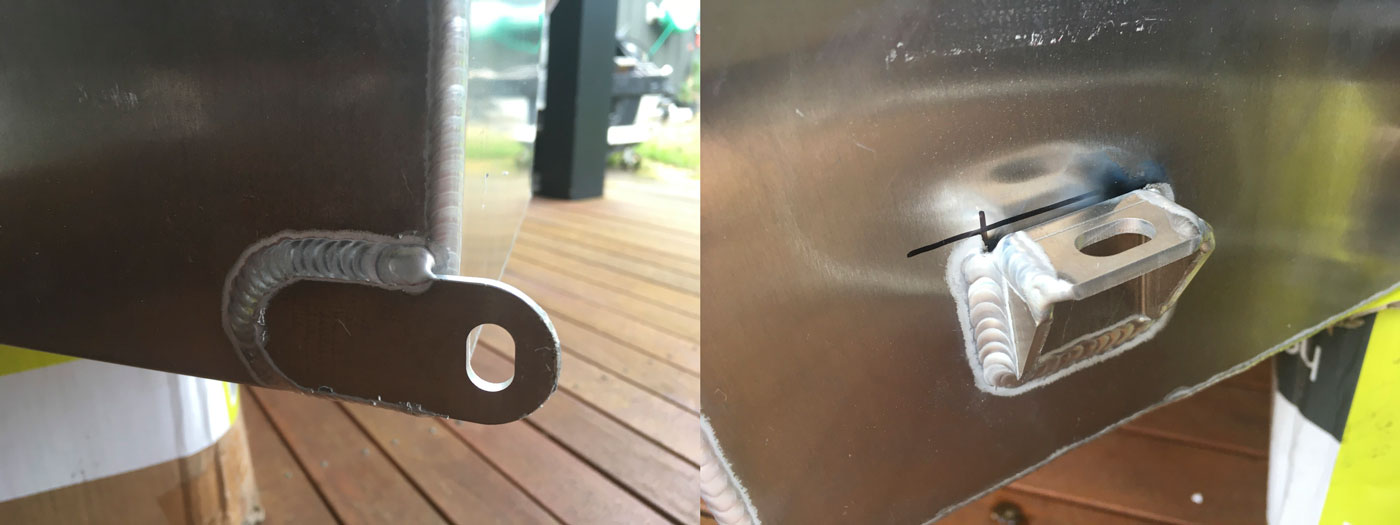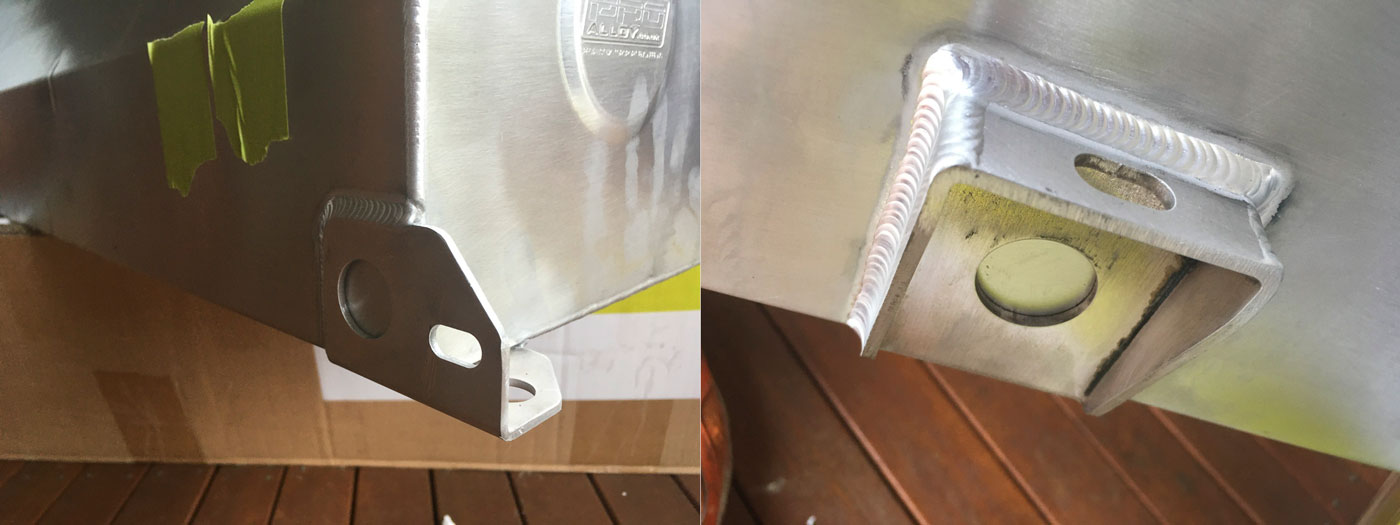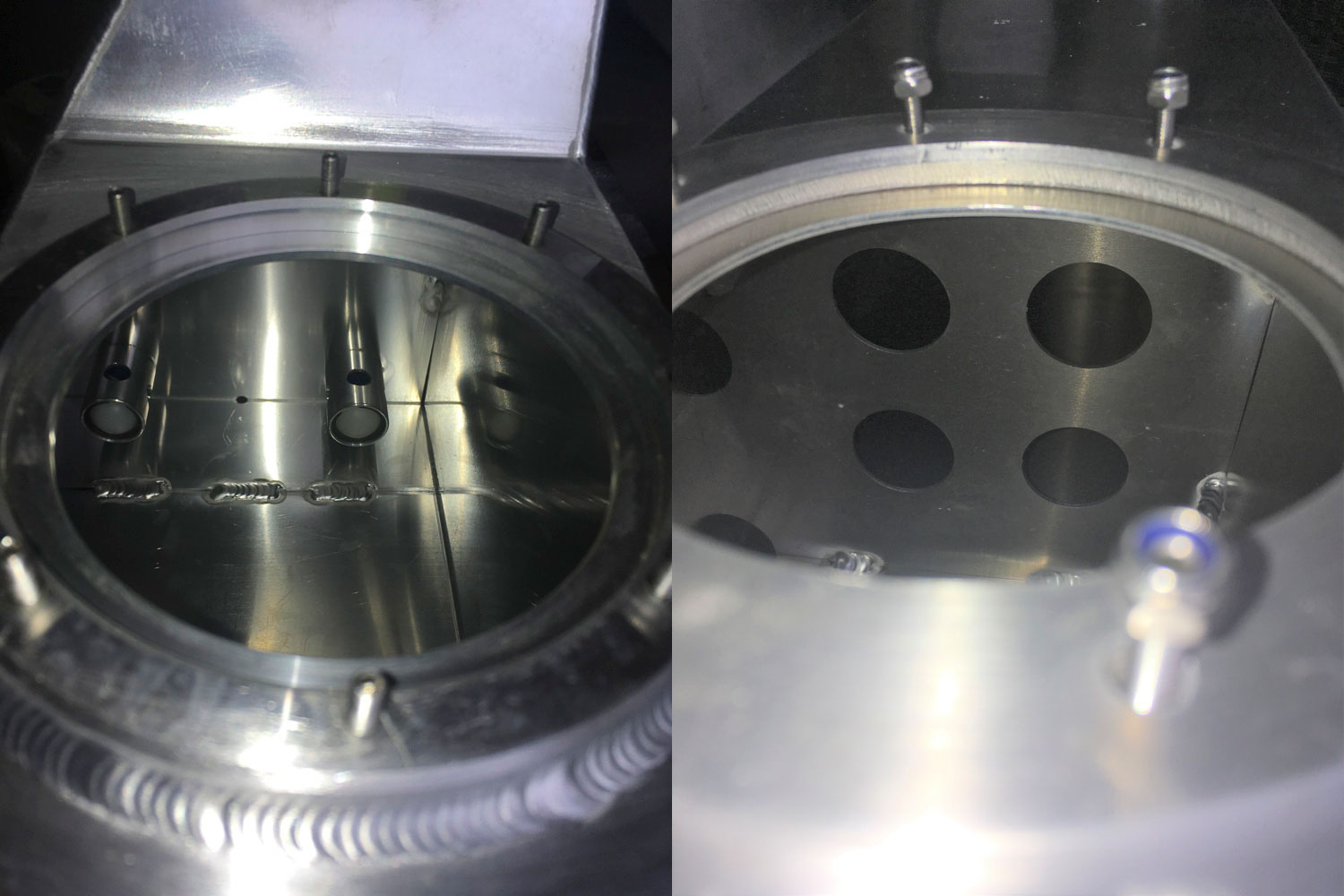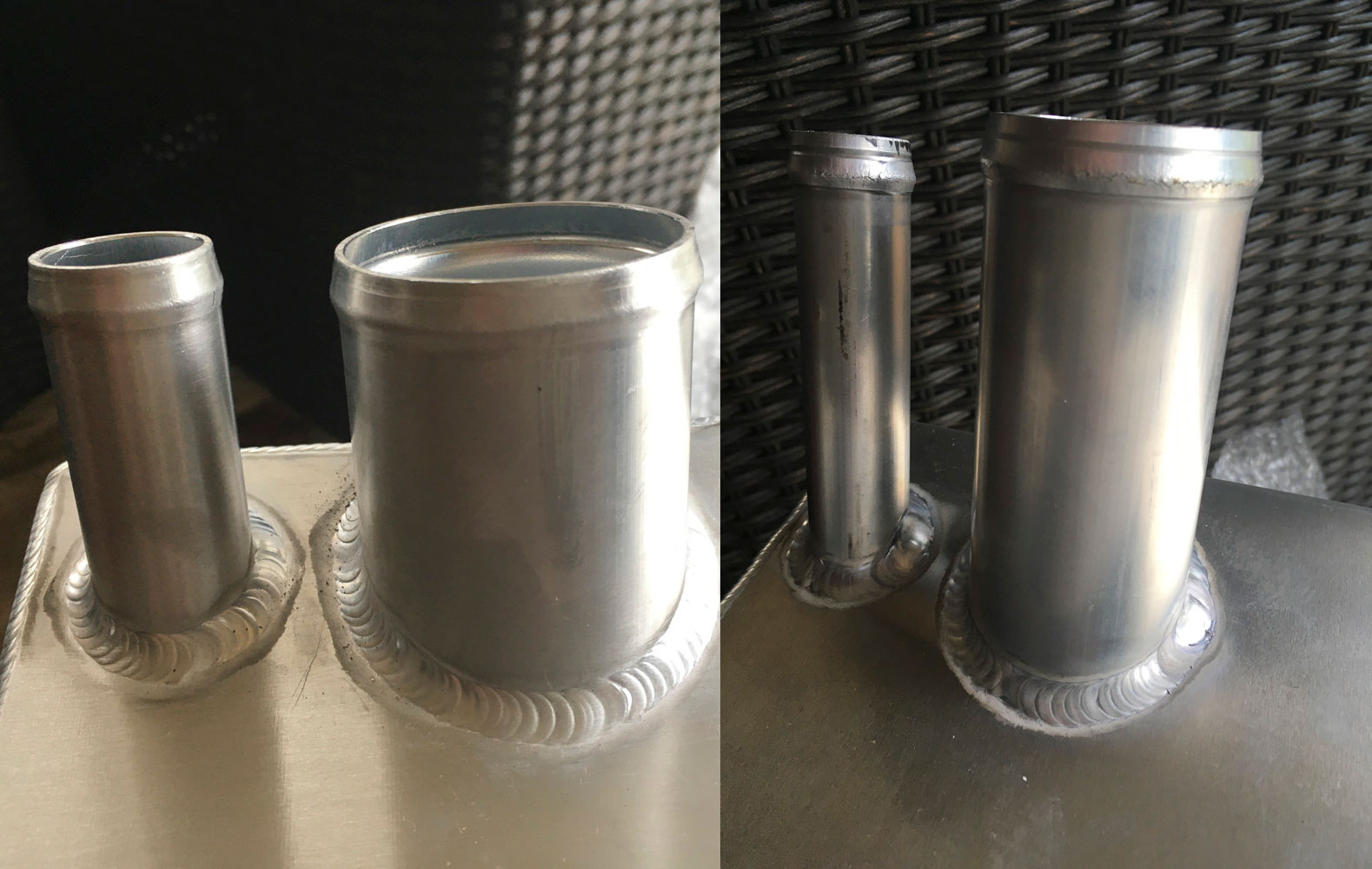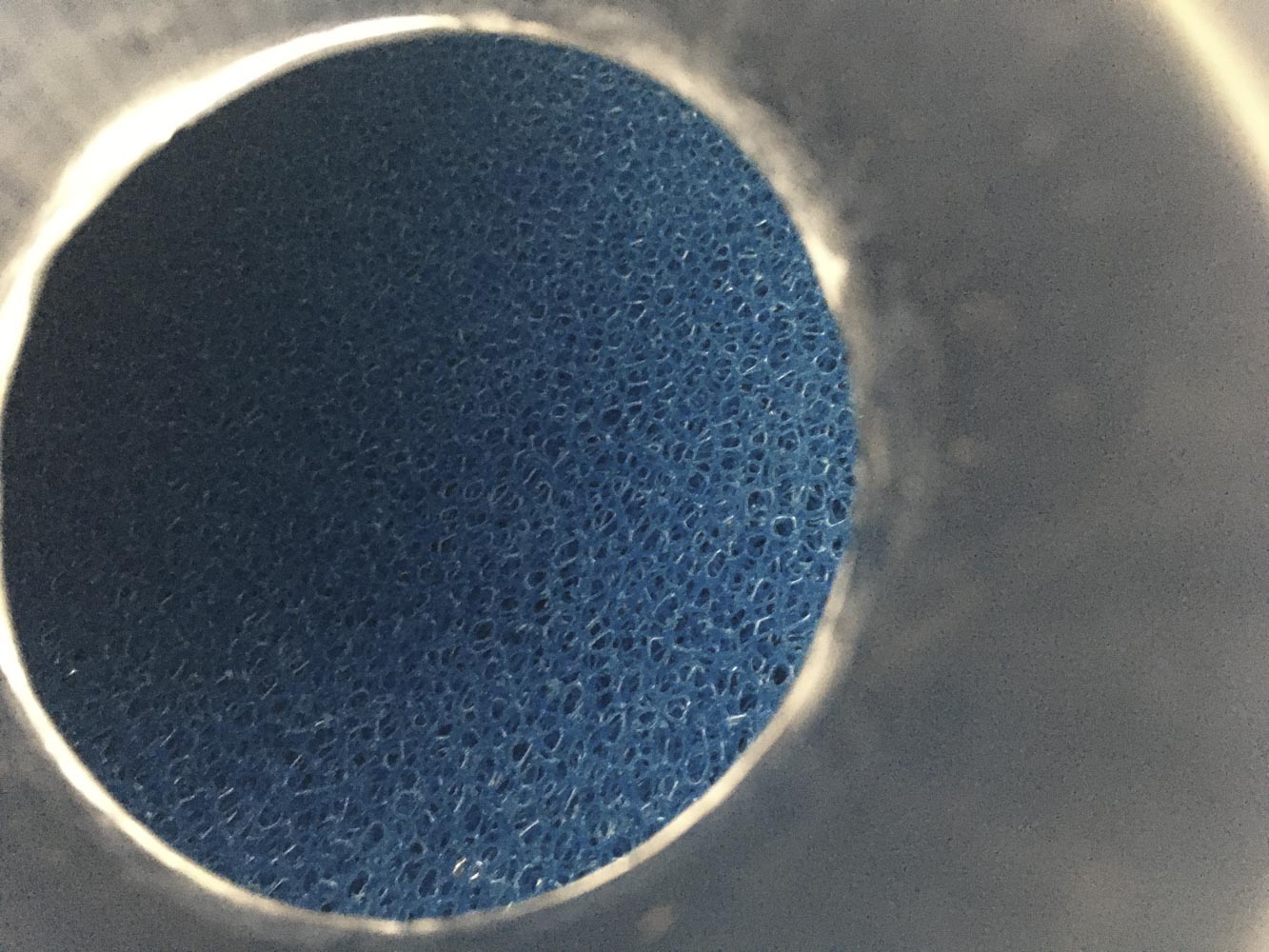Our South Australian correspondent Andrew Stevens recently did some investigation into replacing the original steel fuel tank from an Elise or Exige, and kindly shares his experiences below. Enjoy.
Alloy Fuel Tank for S1 Elise/Exige and Rover S2 Elises
Anyone who has pulled one of the original steel fuel tanks out of an Elise or Exige will recognize how susceptible they are to corrosion. For years, the go-to answer has been to install the high end Pro-Alloy all-aluminium tank. These are available from the UK, or through SSC in Sydney and Melbourne. Not only does it solve the corrosion problem, but it addresses fuel surge for those who track their cars, and offers a handy increase in capacity. The downside is that they are expensive.
There are other manufacturers, but all have similar offerings to Pro-Alloy, at similar price points.
Replacing a tank is pretty straight forward, with the hardest bits being disconnecting the fuel pump and getting the fuel hoses to release, especially if they’ve been sitting there for 20 years.
After the Kevlar bag tank in my S1 Elise reached its use by date and started to leak (conveniently in the week before Bathurst!), I found myself on the lookout for a new tank suitable for competition use. I managed to find a 60L Toyota S2 tank, but to my dismay learned that the fuel tank aperture in Rover S1/S2 is a different size to Toyota cars, and the latter model tanks won’t refit. Luckily, I had a donor car sitting in the shed, and my Rover S2 tank was extracted and made the trek to Bathurst.
However, I still needed a long term solution. At the same time, my friend Mark had acquired a nice S1 from Tassie, and was cleaning it up to his impeccable standard, but wasn’t keen on the cost of fitting a Pro-Alloy tank, when he was only going to use it as a direct replacement for the steel original.
Enter Tony K on Aussie Elises, who was also looking for an S1 tank and came across another source in the UK at about half the Pro-Alloy price. He was organizing a group buy, with the tanks landed in Australia at about $700 from a fabricator in the UK named Josh Leech.
These tanks are specifically S1 or Rover S2 (S1 Tank has 50mm Filler, 25mm Breather while S2 – 44mm Filler, 16mm Breather). Mark jumped in on the buy, while I thought that it wasn’t quite the spec that I was looking for, and went in search of a Pro-Alloy. Luckily I found one sitting in a shed in Sydney and the owner was happy to part with it for a reasonable sum. Both arrived about the same time.
So, how do they compare?
Well, they’re both well made and similar in weight. Both are about 5kg lighter than the 10.8kg steel tank, but the Pro-Alloy with its one way valves, FIA foam filling and greater capacity is slightly the heavier of the two (6.65kg v 5.18kg). The Pro-Alloy is taller which is how it achieves the extra 12L capacity.
The specs on the two tanks are:
| Josh Leech | Pro-Alloy | |
| Tank Capacity | 36 L (as per OEM) | 48L (60L option) |
| Dimensions | 1070 (L) x 202 (W) x 200 (H) | 1070 (L) x 202 (W) x 280 (H) |
| Construction | Twin internal baffles | Internal collector assembly with anti surge check valves |
| 2mm 5051 alloy, tig welded | tig welded alloy (probably 2mm) | |
| Pipes | 50mm Filler, 25mm Breather | 50mm Filler, 25mm Breather |
Both come with the fuel pump mounting and studs ready to drop the original, or upgraded Spitfire pump in. The Josh Leech tank included the pump retaining ring and nylocs.
As my tank was second hand, I’m not sure what comes standard from Pro-Alloy but their website says that the original fittings are re-used. In my case, I don’t have the originals so a spin on my mate’s lathe looks to be the next step.
Externally the construction of the two tanks is similar and the welding on both is excellent. The most noticeable differences are the extra capacity, and the mounting brackets.
On the Josh Leech tank, the mounting brackets are similar to the OEM steel brackets, are nicely made and seem quite adequate, although the end tabs are easily bent in transport.
The Pro-Alloy brackets are a different league entirely, and not only stronger, but provide a better bearing area to spread the load, and wrap around underneath the tank to support it.
The Leech tank seals between the tanktop and the fuel pump, whereas the Pro-Alloy seals between the fuel pump and the housing welded to the tank. Probably a horses for courses difference.
Internally, the Josh Leech tank is, as expected, similar to the OEM with dual perforated tank baffle plates. This is where the Pro-Alloy’s features come to the fore, with proper one way flow valves, a full lateral baffle and Type IV FIA polyether safety foam. Allegedly you can run down to 3L residual fuel in the Pro-Alloy.
The filler and breather necks are similar, with retaining beads on both with the smaller tank having longer pipes. Looking down the Pro-Alloy filler, the foam filling is clearly evident.
Conclusion
For those who track their cars, (or if you have a Toyota-engined car), the Pro-Alloy tank, with its anti surge valves, foam filling, extra capacity, and stronger mounting arrangements is the way to go. As Mark reminded me, having the Leech tank doesn’t preclude you tracking your car, as you are no worse off than an OEM tank.
For those who simply want to replace the existing steel tank in their S1 or Rover S2 with a corrosion free option, the Josh Leech tank is a viable and cost effective option. While you’re at it, replace your filler and breather hose. (but that’s another story), and I’d recommend installing a new O’Ring for the fuel pump while its out. It’s a once in 20 year job.
Both Mark and I are happy with the choices we’d made, based on our planned use.

